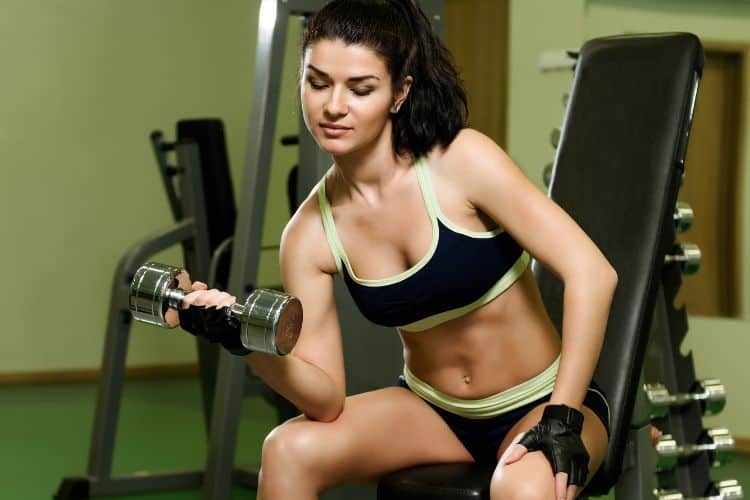Sign up for workout ideas, training advice, reviews of the latest gear and more.






Staying consistent with fitness after the age of 40 can feel like a challenge, especially with changes in energy, metabolism, hormones, and recovery speed. However, maintaining an active lifestyle in your 40s and beyond is not only possible—it’s essential for long-term health, vitality, and well-being.
This guide will walk you through the mindset, planning, and strategies needed to stay consistent with fitness after 40.
As we age, the body undergoes natural changes. One of the most prominent is sarcopenia, the gradual loss of muscle mass. This typically begins around age 30 and accelerates after 40. Regular strength training can slow or even reverse this process, helping to maintain muscle tone, joint stability, and functional strength.
Your basal metabolic rate (BMR) decreases with age, meaning your body burns fewer calories at rest. Staying consistent with workouts—especially strength and interval training—helps counteract this shift and supports weight management.
Cardiovascular health becomes increasingly important with age. Consistent aerobic exercise, such as walking, biking, or swimming, improves heart function, circulation, and stamina. Flexibility and mobility routines help reduce stiffness and injury risk, improving daily function.
Juggling work, family, and personal responsibilities can make it hard to prioritize fitness. Many people in their 40s also experience increased stress levels, which can sap energy and motivation.
For women, perimenopause and menopause can affect energy, weight gain, and muscle tone. For men, testosterone levels may start to decline, impacting recovery and strength. Staying active can help regulate hormonal balance, improve sleep, and enhance mood.
Older bodies don’t recover as quickly. Pushing too hard without adequate rest can lead to injury. This makes smart programming and rest essential for consistency.
Your fitness goals should reflect your current life stage and values. Whether it’s maintaining a healthy weight, gaining energy, or simply feeling stronger, having a purpose behind your workouts can improve commitment.
Example Goal: “I want to stay active so I can hike with my family on weekends.”
Start small with measurable, achievable targets. Progress naturally and celebrate consistency rather than perfection.
Muscle loss accelerates after 40, so strength training should be the cornerstone of your fitness routine.
Best strength exercises after 40 include:
Aim for 2–4 sessions per week, focusing on compound movements that build functional strength.
While strength builds muscle, cardiovascular workouts support endurance, fat burning, and heart health. Combine steady-state cardio (like brisk walking or swimming) with interval training for best results.
Try 2–3 cardio sessions weekly, including:
Flexibility often declines with age. Include mobility work, dynamic stretching, and yoga to support joint health and prevent injury.
Add 10–15 minutes of stretching after workouts or designate 1–2 days a week for focused mobility work.
Rest becomes even more important after 40. Recovery supports hormonal balance, reduces inflammation, and allows muscles to rebuild.
Incorporate:
Having a fitness plan increases the likelihood of consistency. Schedule workouts like appointments—non-negotiable and routine.
Sample Weekly Plan:
Use a fitness journal or an app to track workouts, sleep, energy, and results. Accountability through friends, fitness communities, or a personal trainer helps maintain momentum.
Seeing your progress visually keeps you motivated during plateaus.
Life happens—vacations, illness, work emergencies. Instead of stopping completely, adapt your workouts:
Staying flexible with your approach is the key to consistency.
Aging bodies require more protein for muscle repair and maintenance. Aim for 0.7–1 gram of protein per pound of body weight daily. Include lean meats, fish, eggs, dairy, legumes, and plant proteins.
Choose whole, nutrient-rich foods like:
Water supports joint health, digestion, and energy. Drink at least half your body weight in ounces daily.
Some women benefit from foods that support estrogen balance (like flaxseed or soy), while men may benefit from foods that support testosterone (like tuna, egg yolks, or zinc-rich foods).
After 40, it’s not about looking a certain way—it’s about feeling good, staying independent, and living fully.
Use internal motivators such as:
Chronic stress impacts recovery, fat storage, and energy. Reduce stress through:
Fitness should reduce—not add to—your stress.
Hiring a certified personal trainer with experience in training individuals over 40 can help tailor your routine, prevent injury, and build confidence.
Consistency isn’t always about rapid fat loss or muscle gain. Look for progress in:
Take progress photos, track workouts, or note energy levels to see how far you’ve come.
The truth is, consistency beats intensity after 40. You don’t need to crush every workout—you just need to show up. Adapt your training to match your lifestyle, listen to your body, and fuel yourself with purpose.
Fitness is a lifelong journey. In your 40s and beyond, it’s not about competition or comparison—it’s about longevity, strength, and joy. Make movement part of who you are, and staying consistent will feel like second nature.
Aim for at least 3–5 days a week, including 2–3 strength sessions, 1–2 cardio days, and recovery/stretching work.
Absolutely not! Many people achieve their best shape in their 40s, 50s, and beyond with consistent effort and smart planning.
Start with bodyweight strength exercises, walking, and mobility work. Gradually add resistance and cardio as your base improves.
Staying consistent with fitness after 40 is one of the best investments you can make in your health, energy, and independence. With the right mindset, structured routines, and flexibility in your approach, fitness can become a sustainable, empowering part of your daily life.
Want more effective workouts?
Subscribe to our blog or follow us on Pinterest for new routines, challenges, and fitness tips!
Stay up to date on the latest women’s health, fitness and lifestyle trends and tips.